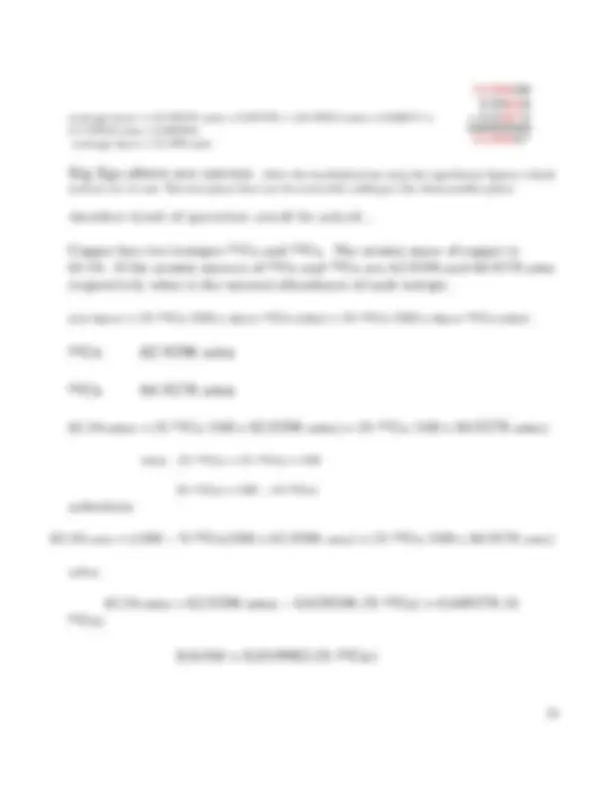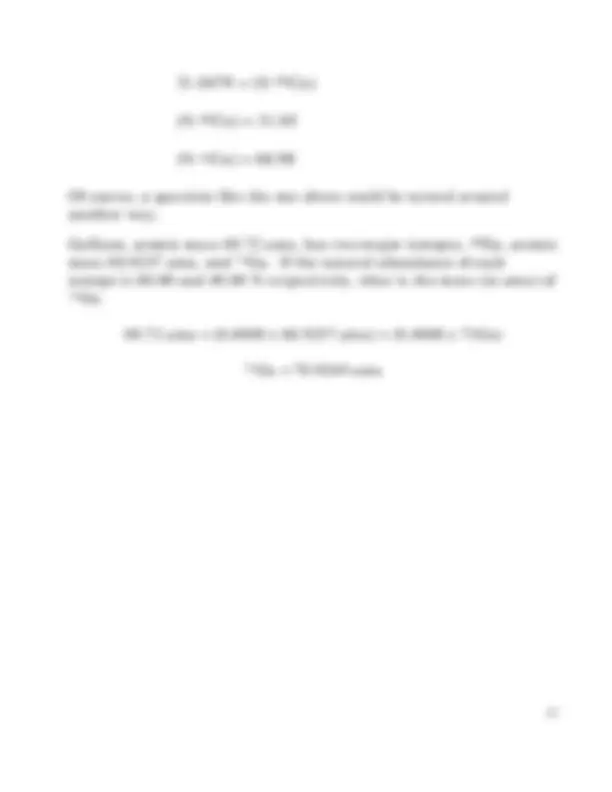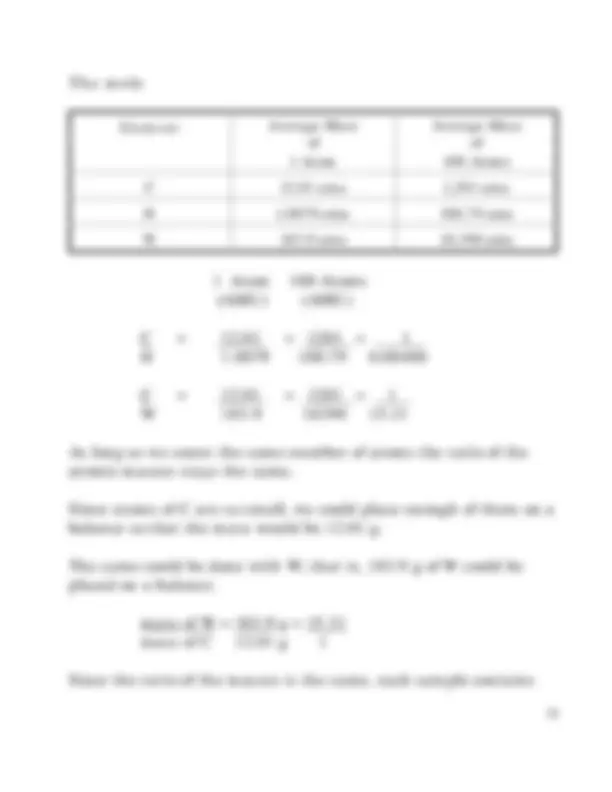





Study with the several resources on Docsity

Earn points by helping other students or get them with a premium plan


Prepare for your exams
Study with the several resources on Docsity

Earn points to download
Earn points by helping other students or get them with a premium plan
Community
Ask the community for help and clear up your study doubts
Discover the best universities in your country according to Docsity users
Free resources
Download our free guides on studying techniques, anxiety management strategies, and thesis advice from Docsity tutors
The concept of atomic mass and isotopes using carbon as an example. It discusses why we use the mass of carbon twelve as a reference, the concept of average atomic mass, and how to calculate it using natural abundances and atomic masses of different isotopes. The document also touches upon the concept of molar mass.
Typology: Study notes
1 / 7

This page cannot be seen from the preview
Don't miss anything!




Atomic Mass Atomic mass is based on a relative scale and the mass of 12 C (carbon twelve) is defined as 12 amu; so, this is an exact number. Why do we specify12 AMU because elements exist as a variety of isotopes. 12 C? We do not simply state that the mass of a C atom is
Carbon exists as two major isotopes,a half life of 5730 y, 10 C and 11 C also exist and their half lives are 12 C, and 13 C ( 14 C exists and has 19.45 min and 20.3 days respectively).same number of protons and electrons, 6. Each 12 C has 6 neutrons, carbon atom has the 13 C has 7 neutrons, andwhich C atom defines the scale. 14 C has 8 neutrons and so on. So, we must specify
All the masses of the elements are determined relative to 12 C. Average Atomic Mass Since many elements have a number of isotopes, chemists use averageatomic mass. On the periodic table the mass of carbon is reported as 12.011 amu. No single carbon atom has a mass of 12.011, but in a handfulof C atoms the average mass of a carbon atom is 12.011.
Why 12.011? If a sample of carbon was placed in a mass spectrometer the spectrometer would detect two different C atoms, The natural abundance of 14 C, 10 C and 11 C in geologic (i.e. old) samples is so low that we cannot 12 C and 13 C. detect the effect these isotopes have on the average mass. From the information collected from the mass spectrometer the averagemass of a carbon atom is calculated.
The mass of (^13) C is 1.0836129 times heavier than 12 C is, of course, 12 amu. 12 C; so, the mass of 13 C is 13.
amu.98.89% of the sample is 12 C, and 1.11% of the sample is 13 C. So, the natural abundance of 13 C is 1.11%, and the natural abundance of 12 C is 98.89% The average mass is simply a weighted average. If we know the natural abundance (the natural abundance of an isotope of an element is the percent of that isotope as it occurs in a sample on earth) of all the isotopes and the mass of all the isotopes we can find the average atomic mass.average atomic mass is simply a weighted average of the masses of all The the isotopes. average mass C = (0.9889 x 12(exact) amu) + (0.0111 x 13.00335) amu = 11.8668 + 0. = 12. 12.01 amu Determine the average atomic mass of oxygen. Isotope Atomic Mass(amu) AbundanceNatural
31.0479 = (% 65 Cu) (% 65 Cu) = 31. (% 63 Cu) = 68. Of course, a question like the one above could be turned aroundanother way.
Gallium, atomic mass 69.72 amu, has two major isotopes,mass 68.9257 amu, and 71 Ga. If the natural abundance of each 69 Ga, atomic isotope is 60.00 and 40.00 % respectively, what is the mass (in amu) of (^71) Ga.
69.72 amu = (0.6000 x 68.9257 amu) + (0.4000 x 71Ga) (^71) Ga = 70.9249 amu
The mole
Element Average Massof 1 Atom
Average Massof 100 Atoms C 12.01 amu 1,201 amu H 1.0079 amu 100.79 amu W 183.9 amu 18,390 amu 1 Atom 100 Atoms (AMU) (AMU) C = 12.01 = 1201 = 1 H 1.0079 100.79 0. C = 12.01 = 1201 = 1 W 183.9 18390 15. As long as we count the same number of atoms the ratio of the atomic masses stays the same. Since atoms of C are so small, we could place enough of them on a balance so that the mass would be 12.01 g. The same could be done with W; that is, 183.9 g of W could be placed on a balance. mass of W = 183.9 g = 15. mass of C 12.01 g 1 Since the ratio of the masses is the same, each sample contains
The atomic mass of C is 12.01 amu. What is the mass of 1 C atom? 1 C atom 6.02214 x 10^23 C atoms 1 mol C atoms x 1 mol C atoms^ x 12.011 g C = 1.9945 x 10-23^ g C
Molar Mass/Molecular Mass The molar mass of a molecule is simply the sum of the atomic masses. CH 4 = 1 mole C atoms + 4 moles H atoms